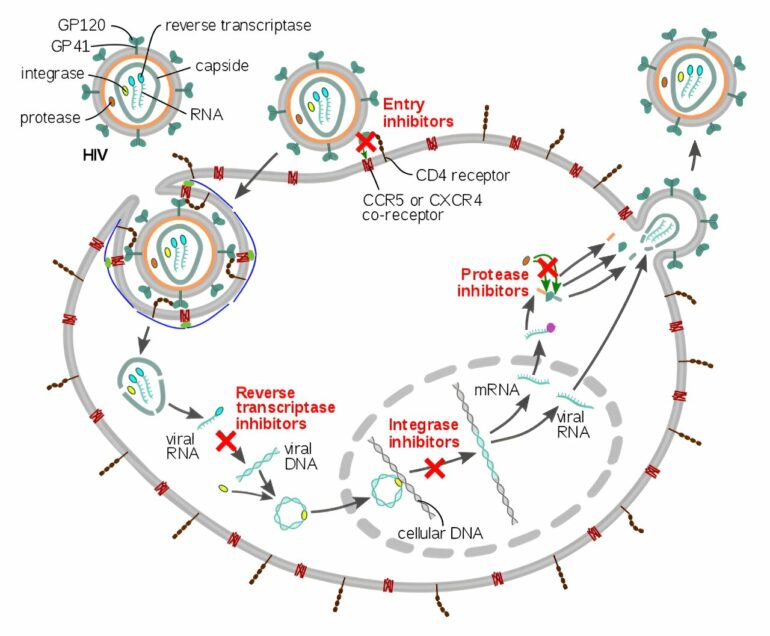COVID-19, flu, mpox, noroviral diarrhea: How do the viruses that cause these diseases actually infect you?
Viruses cannot replicate on their own, so they must infect cells in your body to make more copies of themselves. The life cycle of a virus can thus be roughly described as: get inside a cell, make more virus, get out, repeat.
Getting inside a cell, or viral entry, is the part of the cycle that most vaccines target, as well as a key barrier for viruses jumping from one species to another. My lab and many others study this process to better anticipate and combat emerging viruses.
How viruses enter cells
Different viruses travel into the body in various ways – via airborne droplets, on food, through contact with mucous membranes or through injection. They typically first infect host cells near their site of entry – the cells lining the respiratory tract for most airborne viruses – then either remain there or spread throughout the body.
Viruses recognize specific proteins or sugars on host cells and stick to them. Each virus gets only one shot at putting its genome inside a cell – if their entry machinery misfires, they risk becoming inactivated. So they use several mechanisms to prevent triggering entry prematurely.
After the virus binds to the cell, specific molecules on the cell’s surface or within the cell’s recycling machinery activate viral coat proteins for entry. An example is the SARS-CoV-2 spike that COVID-19 vaccines target. These proteins need to modify the cell membrane to allow the viral genome to get through without killing the cell in the process. Different viruses use different tricks for this, but most work like cellular secretion – how cells release materials into their environment – in reverse. Specialized viral proteins help merge the membranes of the virus and the cell together and release the viral core into the interior of the cell.
This animation depicts HIV fusing its membrane with a cell in order to release its contents inside.
At this point, the viral genome can enter the cell and start replicating. Some viruses use only the cell’s machinery to replicate, while others carry along portions of their own replication machinery and borrow some parts from the cell. After replicating their genomes, viruses assemble the components required to make new viruses.
Two central questions scientists are studying about viral entry are how your body’s defenses can disrupt it and what determines whether a virus from other species can infect people.
Immune defenses against viruses
Your body has a multilayered defense system against viral threats. But the part of your immune system called the antibody response is generally thought to be most effective at sterilizing immunity – preventing an infection from taking hold in the first place as opposed to just limiting its scope and severity.
For many viruses, antibodies target the…



